 |
| I stayed, part of a group of 4 couples, all with one partner a child of a Lusmaghite, in Charlotte's Way, named after Charlotte Bronté, who visited here and whose husband was born here and returned to live here after Charlotte's death. |
 |
| Nicola, our hostess, welcomed us with a pot of tea. We asked for a brief history of the house and soon lapsed into an ancient Lusmagh tradition: ghost stories |
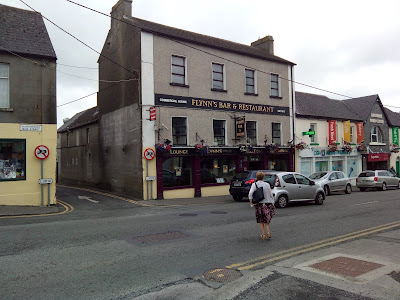 |
| We assembled at Flynn's Bar and Restaurant before proceeding to Charlotte's Way. The arrow to the left of Flynn's points down Queen Street, which leads to Lusmagh Church (3 Miles). |
 |
| Looking west from Flynn's, downhill towards the Shannon. |
 |
| Inside Flynn's |
 |
| One of several beautiful works of art in Flynn's dining room |
 |
| Flynn's extensive dining room. |
 |
| Good food in Flynn's |
 |
| Eliza Fort, built in the 19th century to protect against French invasion. Since the river is navigable, they could invade this way as the Vikings did centuries ago. |
 |
| 24 Pounder canons were sited here on swivels, one pointed to by Sean. They could strike a boat on the Shannon from here. |
 |
| The magazine building, within the fort, which held a fair stock of guns and ammunition. |
 |
| Door to the magazine building, re-vamped by the Board of Works. When I came to Lusmagh as a child, there was no access to this site, which was fenced off, no doubt a dangerous site, since improved. |
 |
| The roof of the magazine building is partially collapsed. |
 |
| Here we see the original brick corballing of the roof. |
 |
| Good solid construction. |
 |
| The fort was surrounded by a moat. |
 |
| Rifle slots |
 |
| Farewell, Eliza fort. |
 |
| We visit Mahon's house, vacant since 2003 when the last occupant died at age 93. The house and contents are as they were the day he died. |
 |
| Inside the kitchen. Jerry, in whitish shirt stands in the door of the lower room. The dresser is to the right of the door, where it always was, and the floor is flagged, but pointed. |
 |
| The traditional sash window. Note the deep wall. |
 |
| Looking into the new dining room. |
 |
| The original fire-place. |
 |
| The dining room, (extension) as the last occupant left it, dust added. |
 |
| Our group of 8 with one addition, Sean on the camera. |
 |
| My own family's Lusmagh home is gone, and Lusmagh Marina is found on the land. |
 |
| Privately owned, birthages rented, lovely and peaceful. |
 |
| Only one of the Gortnacallow Killeen buildings remain |
 |
| The old canal was open and maintained, and a walkway existed beside the canal when I was a child. Now it is completely overgrown and neglected. It is, of course, redundant since 1844. |
 |
| O, the hedge rows; overgrown in this corner of the world |
 |
| View of the Shannon from Shaughnessy's Bridge. Frothy water at left is caused by open Sluice gates to let the water down-stream. |
 |
| Not quite a beach, an access point for young swimmers at Shaughnessy's Bridge. |
 |
| The fish here are similar to those in the Little Brosna, which joins the Shannon a few miles further on, just below Victoria Lock. |
 |
| Another bridge between Shaughnessy's and Victoria Lock. I can't recall its name at the moment. |
 |
| The New Cut looking downriver from here, navigable |
 |
| Continuing down the road towards Victoria Lock. |
 |
| The overgrown canal bank. |
 |
| Approaching Victoria Lock |
 |
| The Lock-master's house, as well as the lock itself are preserved and listed as architectural gems. |
 |
| A boat waits for the lock to fill |
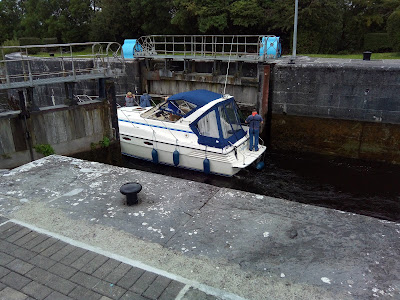 |
| The boat passes through the lock. |
 |
| We join the rest of our party, who have cruised down. We exchange places, and I take the cruise back. |
 |
| The way in to Lusmagh Marina is seen at the top right. |
 |
| Safely back in harbour, we join our captain in a drink on board. |
 |
| Boat tied up and voyage completed. |
 |
| Where would we head for at night, but Hough's pub, for an old-fashioned ballad session. |
 |
| One of those we meet is Joachim Kelly (right), famous Offaly hurler who helped the parish overcome St Cronan's curse (that Lusmagh hurlers would never win a Championship). |
 |
| Music in Hough's |
 |
| Mass in Lusmagh |
 |
| Lusmagh Church (St Cronan's) |
 |
| Kilmochunna Cemetery, where my father's people are buried. |
 |
| Old headstone |
 |
| Kilmochunna: the church of Mochunna, in the cemetery. |
 |
| My family (Killeen of Gortacallow/ Corclogh) tall headstone. |
 |
| We proceed along the bog road from Julia and Tess Killeen's. |
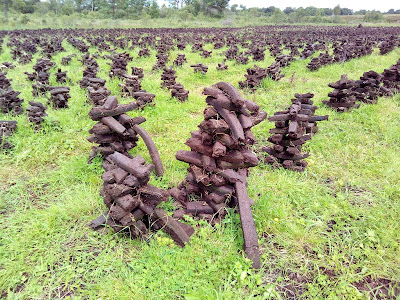 |
| Turf neatly footed and ready, i suppose, for clamping. |
 |
| The bog. |
 |
| Bridge over the Royal Canal at Shannon Harbour. There is a pleasant canal walk from here: in fact you can walk all the way to Dublin. |
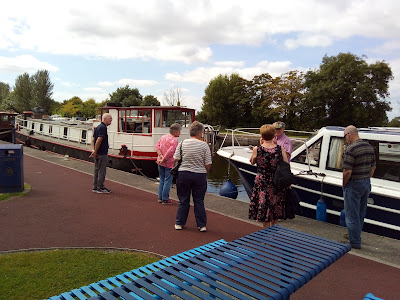 |
| Picnic tables and boats. The new traffic on the River and Canals is pleasure craft. Boaters support cafés and restaurants, but not hotels, since they sleep aboard. |
 |
| The Grand Canal Hotel |
 |
| The Harbour Master's Bead and Breakfast. |
 |
| Another de-roofed building at Shannon Harbour |
 |
| Evening draws in and we head back to Banagher |














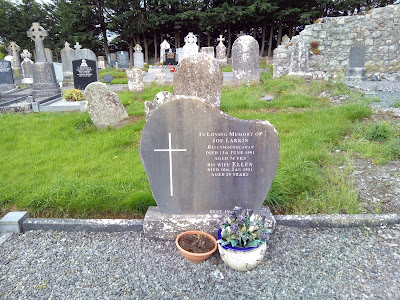

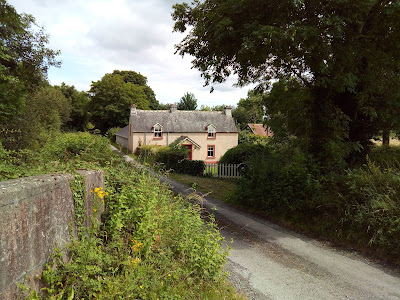


No comments:
Post a Comment